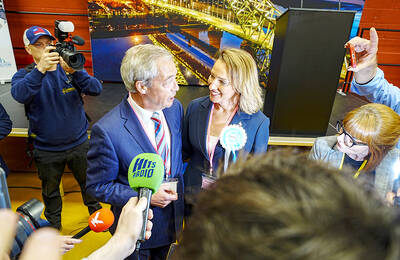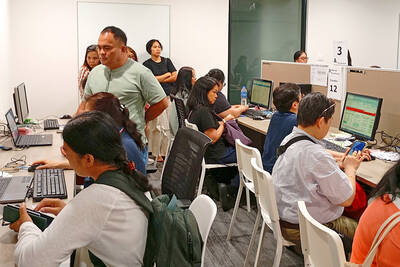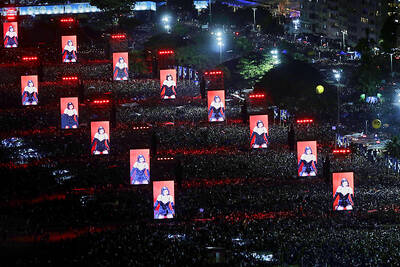A rough, concrete bathtub was left behind for decades in a corner of a Warsaw backyard.
The massive, uncomfortable tub was made in the Stalin era amid the Korean War and supply shortages. Like many technologies in the former Soviet-bloc, it was built for necessity, not comfort.
The tub is a funny relic from Poland? communist past and a reminder of how communist industry proved so ineffectual it was often surreal.
But this year, as Poland celebrates the 20th anniversary of communism? fall, the owner is digging out the tub to submit for a contest at the Polish History Museum.
While most people can picture the USSR? massive, polluting factories and heavy industries like coal or steel, fewer people know about technology? little absurdities under the regime.
And it? the comic and odd objects the museum hopes to collect for a book or possible display on communism? ?nti-technology.?br />
It? especially important to gather the material now, said Michal Kopczynski, head of the museum? research department, before it becomes distant history.
?his technology and organization isn? very well documented,?Kopczynski said, ?nd we want to gather these now, while the people who lived during that time are still alive.?br />
Contest submissions can be technology, like a machine invented to throw rocks into coal to speed up production when coal purity didn? matter.
Contestants can also submit tales of labor practices, like the way factory cars were disassembled when supplies were short so they could be put together again and falsely raise numbers on the assembly line.
The idea for the contest comes from technical historian Boleslaw Orlowski, who has written of communist-era ?nti-technology,?or 貞olutions that are not logical.
?hat mattered is that you produced how much the central command wanted,?Kopczynski said. ?hether you sold things or not, it didn? matter. It was a system of shortages, so you could produce low quality and it would still sell.?br />
The competition comes at a time when enough years have passed for Poles to see the humor of life under the regime. While the subject still raises emotions, Poles can now look back with more distance.
?here? a tendency to look at that era in two ways,?said Robert Kostro, the museum? director. ?ou can denounce it and look at it from the point of view of terror, or sentimentalize it and remember the funny or absurd things. You can? look at that period only through the prism of repression.?br />
Interest in communist daily life has surfaced recently with several new books that focus more on the era? clumsy washing machines and orange soda than on historical events.
Varsovians now take walking tours through socio-realist neighborhoods that were once dismissed as dull, while the 20th anniversary of communism? fall brings concerts, historic re-enactments and debates.
Kostro says it? the responsibility of museums to preserve those memories now, so young people can understand the ?tarting point?of modern Polish democracy.
But the core of the contest wants to explain why the Soviet bloc lagged behind in progress for half a century and why it ultimately failed to inspire people.
Former government spokesman Jerzy Urban, one of the regime? most disliked figures, had an explanation for the era? slow production and worker apathy.
?rban said in Poland people are so demoralized that no type of system would help,?Kopczynski said.
? was reading at the time about Henry Ford? assembly line and how they said Poles made the best workers,?he said. ?nd I thought who was right, Jerzy Urban or Henry Ford?

Kehinde Sanni spends his days smoothing out dents and repainting scratched bumpers in a modest autobody shop in Lagos. He has never left Nigeria, yet he speaks glowingly of Burkina Faso military leader Ibrahim Traore. “Nigeria needs someone like Ibrahim Traore of Burkina Faso. He is doing well for his country,” Sanni said. His admiration is shaped by a steady stream of viral videos, memes and social media posts — many misleading or outright false — portraying Traore as a fearless reformer who defied Western powers and reclaimed his country’s dignity. The Burkinabe strongman swept into power following a coup in September 2022

‘FRAGMENTING’: British politics have for a long time been dominated by the Labor Party and the Tories, but polls suggest that Reform now poses a significant challenge Hard-right upstarts Reform UK snatched a parliamentary seat from British Prime Minister Keir Starmer’s Labor Party yesterday in local elections that dealt a blow to the UK’s two establishment parties. Reform, led by anti-immigrant firebrand Nigel Farage, won the by-election in Runcorn and Helsby in northwest England by just six votes, as it picked up gains in other localities, including one mayoralty. The group’s strong showing continues momentum it built up at last year’s general election and appears to confirm a trend that the UK is entering an era of multi-party politics. “For the movement, for the party it’s a very, very big

A new online voting system aimed at boosting turnout among the Philippines’ millions of overseas workers ahead of Monday’s mid-term elections has been marked by confusion and fears of disenfranchisement. Thousands of overseas Filipino workers have already cast their ballots in the race dominated by a bitter feud between President Ferdinand Marcos Jr and his impeached vice president, Sara Duterte. While official turnout figures are not yet publicly available, data from the Philippine Commission on Elections (COMELEC) showed that at least 134,000 of the 1.22 million registered overseas voters have signed up for the new online system, which opened on April 13. However,

ENTERTAINMENT: Rio officials have a history of organizing massive concerts on Copacabana Beach, with Madonna’s show drawing about 1.6 million fans last year Lady Gaga on Saturday night gave a free concert in front of 2 million fans who poured onto Copacabana Beach in Rio de Janeiro for the biggest show of her career. “Tonight, we’re making history... Thank you for making history with me,” Lady Gaga told a screaming crowd. The Mother Monster, as she is known, started the show at about 10:10pm local time with her 2011 song Bloody Mary. Cries of joy rose from the tightly packed fans who sang and danced shoulder-to-shoulder on the vast stretch of sand. Concert organizers said 2.1 million people attended the show. Lady Gaga